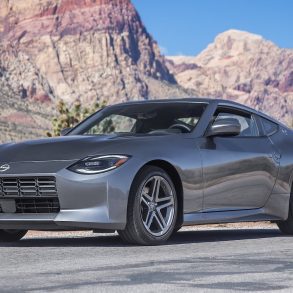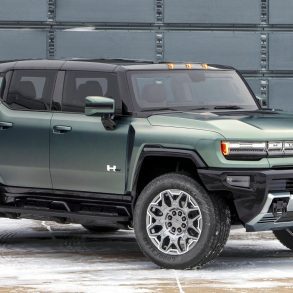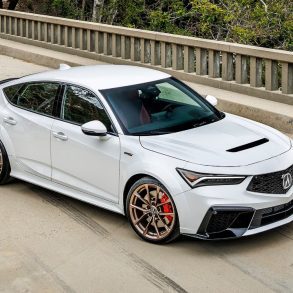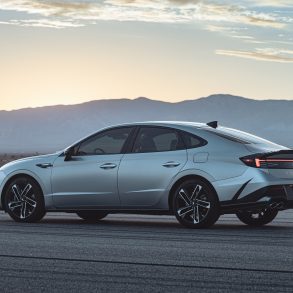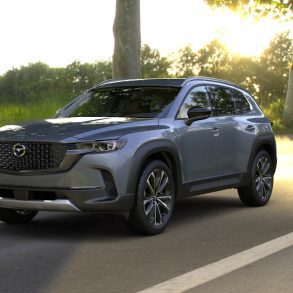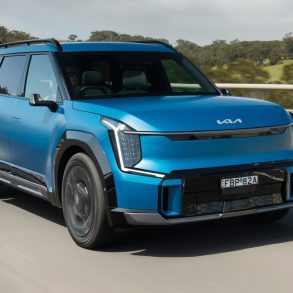Honda Sales Data, Trends & Analysis for the European Automotive Market
Honda sales in Europe have declined steadily in Europe from 2009 to 2015, with market share sliding accordingly, to below 1% for the first time ever in 2015, compared to 2 percent in 2007. In 2016, its share slightly rebounded to above 1% before dropping to an all-time low in 2017.
Some critics say Honda seems to give Europe a lower priority than the US and China, where the brand sells ten times more cars a year in each of those regions than in Europe. New models are often launched much later here than in other parts of the world, sometimes by as much as two full years. On the other hand Honda has continued to develop a Civic hatchback (and station wagon of the previous two generations) specifically for Europe, which shows it is dedicated to the market. Still, Honda remains a niche player in the continent, and none of its models has sold over 50.000 annual units since 2011.
The CR-V midsized SUV was Honda’s best selling model in Europe from 2013 to 2015, outselling both the Jazz subcompact and the Civic compact for the first time. Sales of both these models have declined steadily, but rebounded in 2016 when the Civic reclaimed its position as sales leader for the brand. The new generation Civic arrived early 2018, but whether its styling appeals to European tastes remains to be seen. The new generation Jazz, which was finally introduced at the end of 2015 together with the Jazz-based small crossover HR-V and both helped the brand recover in 2016, although the Accord was pulled from the struggling midsized segment.
Despite being one of the hybrid pioneers, Honda has been unable to capitalize on its hybrid cars as much as Toyota has done with the Prius, Auris and Yaris, as sales of Civic and Jazz hybrid have been much slower than their Japanese competitors, and Insight and CR-Z sales have fallen quickly, from a combined 17.435 in 2010 to virtually zero in 2015. Both models were pulled from the market as well, leaving the brand with a four-vehicle line-up, as the NSX sports car sells just a handful of units per month.
Honda Europe Sales Figures & Recent Highlights
Honda Europe sales figures have been declining in recent years. In 2020, Honda sold 180,000 cars in Europe. In 2021, Honda sales in Europe fell to 160,000 cars. And in 2022, Honda sales in Europe fell further to 140,000 cars. Despite the decline in sales, Honda still has a loyal following in Europe. The company’s cars are known for their reliability and fuel efficiency.
The Civic is a popular compact car that was discontinued in Europe in 2022. The discontinuation of the Civic was a major blow to Honda’s sales in Europe. Honda has introduced its e:HEV hybrid technology in Europe. This technology combines a gasoline engine with an electric motor to improve fuel efficiency. Honda has partnered with Sony to develop an electric SUV. This partnership could help Honda to compete in the growing electric vehicle market in Europe.
Overall, Honda Europe sales have been declining in recent years. The company is facing a number of challenges, including the popularity of SUVs, the shift to electric vehicles, and the lack of new models. Honda is working to address these challenges, but it remains to be seen if the company will be able to turn things around in Europe.
In 2022, Honda announced that it would invest €400 million in electric vehicles and battery production in Europe. Honda also announced that it would launch two new electric vehicles in Europe in 2023, the e:NS1 and e:NS7. Honda is also working to expand its dealer network in Europe. The company plans to open 50 new dealerships in Europe by 2025.
Honda Annual Sales Data, Growth & Market Share in Europe
Below we have a table that shows total Honda sales volumes for the European automotive market, broken out by year. This data captures all Honda vehicle sales for the entire European automotive market.
| Year | Sales | YOY Change | Marketshare | Marketshare Change |
|---|---|---|---|---|
| 1997 | 200,319 | 0.00 | 2.42 | 0.00 |
| 1998 | 201,033 | 0.36 | 2.12 | -14.19 |
| 1999 | 172,161 | -14.36 | 1.52 | -39.72 |
| 2000 | 147,661 | -14.23 | 1.26 | -20.46 |
| 2001 | 139,508 | -5.52 | 1.12 | -12.31 |
| 2002 | 173,190 | 24.14 | 1.38 | 18.87 |
| 2003 | 188,828 | 9.03 | 1.50 | 7.88 |
| 2004 | 260,231 | 37.81 | 1.87 | 19.45 |
| 2005 | 274,539 | 5.50 | 1.97 | 5.26 |
| 2006 | 275,000 | 0.17 | 1.99 | 1.26 |
| 2007 | 308,709 | 12.26 | 2.23 | 10.71 |
| 2008 | 261,753 | -15.21 | 2.03 | -9.96 |
| 2009 | 256,874 | -1.86 | 1.95 | -4.12 |
| 2010 | 199,416 | -22.37 | 1.58 | -23.76 |
| 2011 | 163,043 | -18.24 | 1.30 | -21.68 |
| 2012 | 140,496 | -13.83 | 1.24 | -4.56 |
| 2013 | 139,592 | -0.64 | 1.23 | -0.61 |
| 2014 | 133,198 | -4.58 | 1.11 | -11.43 |
| 2015 | 123,106 | -7.58 | 0.95 | -15.77 |
| 2016 | 125,810 | 2.20 | 0.91 | -5.09 |
| 2017 | 110,941 | -11.82 | 0.76 | -18.83 |
| 2018 | 109,792 | -1.04 | 0.77 | 0.25 |
| 2019 | 101,185 | -7.84 | 0.69 | -11.71 |
| 2020 | 62,711 | -38.02 | 0.56 | -22.70 |
| 2021 | 62,235 | -0.76 | 0.56 | 0.50 |
| 2022 | 65,947 | 5.96 | 0.64 | 12.42 |
Honda Europe Annual Sales Units & Growth Chart
Below is a visual representation of Honda Europe sales units over time. We have both the Honda sales units and the market share in the European market. Click on the items in the legend to see each series by itself.
Honda Europe Growth Rate & Market Share Chart
Below is the annual growth rate for the Honda brand in the Europe, shown against the Honda’s marketshare changes in the Europe. This gives you a good look into how Honda has faired against the other brands in terms of absolute sales and effect on marketshare. Click on the items in the legend to see each series by itself.
The Best-Selling Honda Cars & SUVs in Europe
COMING SOON
Sources: Manufacturers, ANDC, JATO Dynamics.



